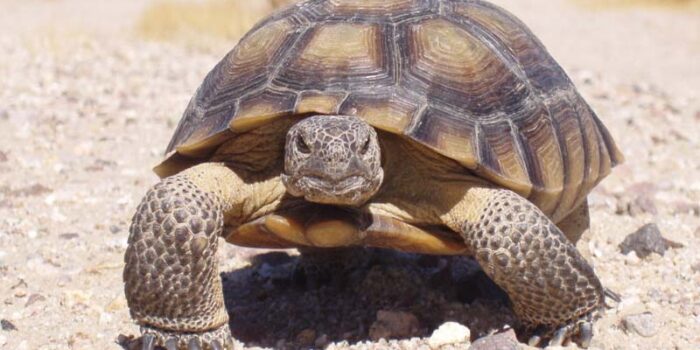Galapagos Islands is considered home to some of the most astonishing and breathtaking wildlife in the world. It is located on the West Coast of South America. A large number of unique animal species are present in this dynamic island. Following is the list of 10 Endemic Animals of the Galapagos Islands.
10. Lava Lizard
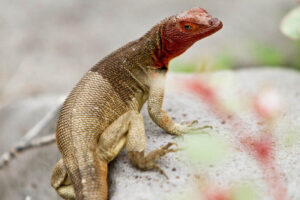
Lava lizards live on the main Islands of the Galapagos. These small reptiles have seven recognized subspecies that are endemic to the Galapagos Islands. Generally, they are found in rocky areas of Galapagos Island.
Lava lizards can grow up to a length of 30 centimeters. Males can grow about three times heavier than that of females. This unique creature has a pointed head and tapering tails. The color of lava lizards changes according to age. It varies from dark brown to reddish brown. A special pattern of markings is present on a male’s body.
Both males and females become very aggressive in defending their territory against intruders. They feed on different ants, spiders, insects, and snails. The life span of lava lizards ranges from 7 to 10 years.
9. Large Painted Locusts
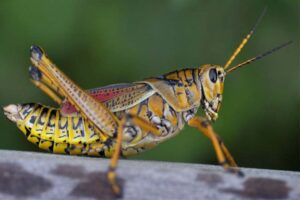
Largely painted locusts are one of the most beautiful and colorful unique creatures found on the Galapagos Islands. They are native to the Ecuador Island of Galapagos. Their size is very small and can only grow up to 8 cm in length. Hawks and lava lizards are their main and potential predators.
8. Darwin’s Finches
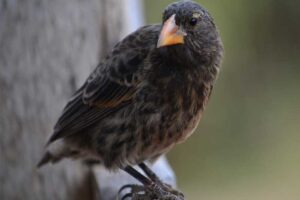
Darwin’s Finches comes at number 8 in the list of Endemic animals of the Galapagos Islands. They are also known as small land birds and are colonized on the islands of the Galapagos. Thirteen various groups of Darwin’s Finches are found in Galapagos. But actually, they don’t belong to any recognized bird family. The size and shape of the beak also vary from island to island. This unique creature can grow up to 10 to 20 cm in length and weight 10 and 38 grams.
7. Galapagos Mockingbird
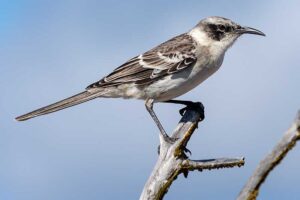
It has a medium size and is native to the Galapagos Islands. There are four most famous and recognized groups of these birds present in Galapagos. Each of them has a size between 25 and 28 centimeters. Their long tails, long legs, and long beaks are the most prominent features.
6. Flightless Cormorant
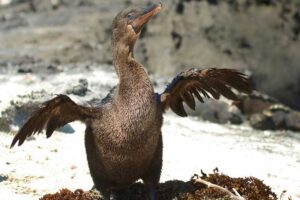
Cormorant is among the unusual birds native to Galapagos. The unique thing about them is that they are the only species of Cormorant that lost the ability to fly. Their total population is estimated between 700 and 800. They are endemic to these islands and can grow 30 to 40 inches in length. They contain long legs, long hooked bills, and webbed feet and weigh 3 and 5 kg.
Read More: Top 10 Flightless Birds
5. Hawk
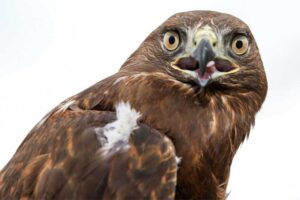
This unique creature is the only diurnal raptor on these islands. It is extremely famous for its dark plumage and broad wings. They can grow up to 27 inches in length and have a wingspan of 47 inches. They have strong legs and powerful beaks which help them in catching the prey.
4. Penguin
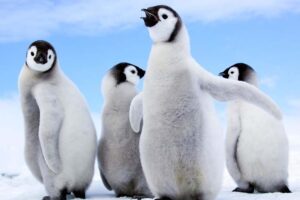
Penguins are among well-known endemic animals and are recognized by their large bill and narrow white lines around the face. They are very beautiful and can grow up to a length of 19 inches. Their weight is around 2.5 kilograms.
3. Galapagos Fur Seal
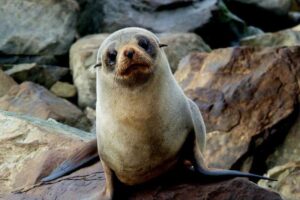
They are the smallest fur seals living in this world. These little unique creatures are widely distributed in these islands. Its total population is estimated at 38000-40000. They prefer to live on the rocky shores of the Galapagos. They have a length of 1.5 meters and a weight of up to 65 kg.
2. Marine Iguana
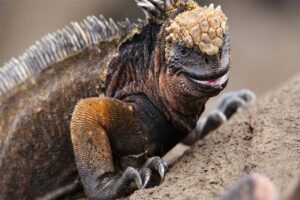
Marine Equana is among those endemic animals whose size varies between Islands. Its length varies between 20 and 50 inches and weighs up to 10 kg. Surprisingly their coloration also changes to red or green during mating season. Usually, they are found in black or grey colors. They have potential predators. Hawks and sea birds are their main predators.
1. Tortoise
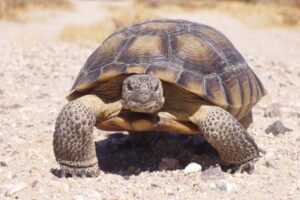
Tortoise is leading the list and is one of the longest-living animals in the world. Having an average lifespan of 100 years they are now listed as endangered species. Because only 15000 remain today. This unique creature has a length of up to 5 feet and weighs between 250 to 320 kg.
